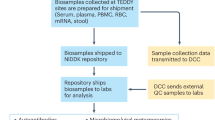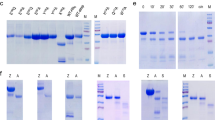Abstract
Protein-losing enteropathy (PLE) is a clinical disorder of protein loss from the gastrointestinal system that results in hypoproteinemia and malnutrition. This condition is associated with a wide range of gastrointestinal disorders. Recently, a unique syndrome of congenital PLE associated with biallelic mutations in the DGAT1 gene has been reported in a single family. We hypothesize that mutations in this gene are responsible for undiagnosed cases of PLE in infancy. Here we investigated three children in two families presenting with severe diarrhea, hypoalbuminemia and PLE, using clinical studies, homozygosity mapping, and exome sequencing. In one family, homozygosity mapping using SNP arrays revealed the DGAT1 gene as the best candidate gene for the proband. Sequencing of all the exons including flanking regions and promoter regions of the gene identified a novel homozygous missense variant, p.(Leu295Pro), in the highly conserved membrane-bound O-acyl transferase (MBOAT) domain of the DGAT1 protein. Expression studies verified reduced amounts of DGAT1 in patient fibroblasts. In a second family, exome sequencing identified a previously reported splice site mutation in intron 8. These cases of DGAT1 deficiency extend the molecular and phenotypic spectrum of PLE, suggesting a re-evaluation of the use of DGAT1 inhibitors for metabolic disorders including obesity and diabetes.
Similar content being viewed by others
Log in or create a free account to read this content
Gain free access to this article, as well as selected content from this journal and more on nature.com
or
References
Umar SB, DiBaise JK : Protein-losing enteropathy: case illustrations and clinical review. Am J Gastroenterol 2010; 105: 43–49, quiz 50.
Lee YT, Sung JJ : Protein-losing enteropathy. Gastrointest Endosc 2004; 60: 801–802.
Canani RB, Terrin G, Cardillo G, Tomaiuolo R, Castaldo G : Congenital diarrheal disorders: improved understanding of gene defects is leading to advances in intestinal physiology and clinical management. J Pediatr Gastr Nutr 2010; 50: 360–366.
Haas JT, Winter HS, Lim E et al: DGAT1 mutation is linked to a congenital diarrheal disorder. J Clin Invest 2012; 122: 4680–4684.
Cases S, Smith SJ, Zheng YW et al: Identification of a gene encoding an acyl CoA: diacylglycerol acyltransferase, a key enzyme in triacylglycerol synthesis. Proc Natl Acad Sci USA 1998; 95: 13018–13023.
Cheng D, Iqbal J, Devenny J et al: Acylation of acylglycerols by acyl coenzyme a:diacylglycerol acyltransferase 1 (DGAT1) functional importance of DGAT1 in the intestinal fat absorption. J Biol Chem 2008; 283: 29802–29811.
Smith SJ, Cases S, Jensen DR et al: Obesity resistance and multiple mechanisms of triglyceride synthesis in mice lacking Dgat. Nat Genet 2000; 25: 87–90.
Chen HC, Smith SJ, Ladha Z et al: Increased insulin and leptin sensitivity in mice lacking acyl CoA: diacylglycerol acyltransferase 1. J Clin Invest 2002; 109: 1049–1055.
Wierenga KJ, Jiang ZJ, Yang AC, Mulvihill JJ, Tsinoremas NF : A clinical evaluation tool for SNP arrays, especially for autosomal recessive conditions in offspring of consanguineous parents. Genet Med 2013; 15: 354–360.
Li H, Durbin R : Fast and accurate short read alignment with Burrows-Wheeler transform. Bioinformatics 2009; 25: 1754–1760.
McKenna A, Hanna M, Banks E et al: The Genome Analysis Toolkit: a MapReduce framework for analyzing next-generation DNA sequencing data. Genome Res 2010; 20: 1297–1303.
Li MX, Gui HS, Kwan JS, Bao SY, Sham PC : A comprehensive framework for prioritizing variants in exome sequencing studies of Mendelian diseases. Nucleic Acids Res 2012; 40: e53.
Livak K : Comparative Ct method. ABI Prism 7700 Sequence Detection System 1997.
Livak KJ, Schmittgen TD : Analysis of relative gene expression data using real-time quantitative PCR and the 2(-Delta Delta C(T)) Method. Methods 2001; 25: 402–408.
Suzuki K, Bose P, Leong-Quong RY, Fujita DJ, Riabowol K : REAP: a two minute cell fractionation method. BMC Res Notes 2010; 3: 294.
Cheng J, Randall A, Baldi P : Prediction of protein stability changes for single-site mutations using support vector machines. Proteins 2006; 62: 1125–1132.
Venselaar H, Te Beek TA, Kuipers RK, Hekkelman ML, Vriend G : Protein structure analysis of mutations causing inheritable diseases. An e-Science approach with life scientist friendly interfaces. BMC Bioinformatics 2010; 11: 548.
Lehnert K, Ward H, Berry SD et al: Phenotypic population screen identifies a new mutation in bovine DGAT1 responsible for unsaturated milk fat. Sci Rep 2015; 5: 8484.
Lu J, Boeren S, van Hooijdonk T, Vervoort J, Hettinga K : Effect of the DGAT1 K232A genotype of dairy cows on the milk metabolome and proteome. J Dairy Sci 2015; 98: 3460–3469.
Shani M, Theodor E, Frand M, Goldman B : A family with protein-losing enteropathy. Gastroenterology 1974; 66: 433–445.
Chen HC : Enhancing energy and glucose metabolism by disrupting triglyceride synthesis: Lessons from mice lacking DGAT1. Nutr Metab 2006; 3: 10.
Cases S, Stone SJ, Zhou P et al: Cloning of DGAT2, a second mammalian diacylglycerol acyltransferase, and related family members. J Biol Chem 2001; 276: 38870–38876.
Acknowledgements
This research was supported by the Intramural Research Programs of the National Human Genome Research Institute, National Institutes of Health, Bethesda, MD, USA; the I-CORE program (grants No. 41/11); and the Gene and Protein Expression core of the NIH-supported Cincinnati Children’s Hospital Research Foundation Digestive Health Center (1P30DK078392-01). We thank the patients and their families for their kind assistance.
Author information
Authors and Affiliations
Corresponding author
Ethics declarations
Competing interests
The authors declare no conflict of interest.
Additional information
Supplementary Information accompanies this paper on European Journal of Human Genetics website
Rights and permissions
About this article
Cite this article
Stephen, J., Vilboux, T., Haberman, Y. et al. Congenital protein losing enteropathy: an inborn error of lipid metabolism due to DGAT1 mutations. Eur J Hum Genet 24, 1268–1273 (2016). https://doi.org/10.1038/ejhg.2016.5
Received:
Revised:
Accepted:
Published:
Issue date:
DOI: https://doi.org/10.1038/ejhg.2016.5
This article is cited by
-
Diet and Management of Diarrhea
Indian Journal of Pediatrics (2024)
-
Apoptotic enteropathy, gluten intolerance, and IBD-like inflammation associated with lipotoxicity in DGAT1 deficiency–related diarrhea: a case report of a 17-year-old patient and literature review
Virchows Archiv (2022)
-
Overview of Albumin Physiology and its Role in Pediatric Diseases
Current Gastroenterology Reports (2021)
-
DGAT1 mutations leading to delayed chronic diarrhoea: a case report
BMC Medical Genetics (2020)
-
Cortical atrophy and hypofibrinogenemia due to FGG and TBCD mutations in a single family: a case report
BMC Medical Genetics (2018)



